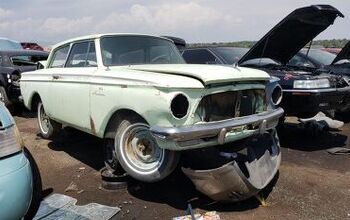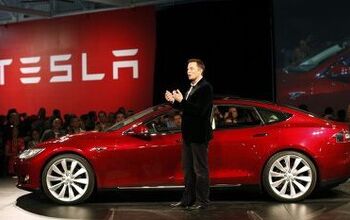Chrysler's Low Cost Car Experiment
The rise of low-cost cars has captured our attention at TTAC for more than just our love of obscure cars. With mainstream brands being hollowed out in Europe, low-cost cars are becoming the new default choice for the 99 percent, and making them profitably presents an even greater challenge. While Dacia and Datsun get a lot of attention around here, we have to give credit to Chrysler for their novel approach to the low-cost car, long before the Sandero was even a glimmer in James May’s eye.
The car’s body panels were made via injection molding with a specially-designed resign. The four pieces could be colored from the get-go, eliminating the need for a paint shop, saving hundreds of millions of dollars. The production process was similarly designed for simplicity and cost-effectiveness. Only four basic panels were needed, in addition to the doors, hood and canvas roof, all of which were anchored to a steel frame. Adhesive was used instead of hardware, save for four bolts.
The body panels were designed to be recyclable as well. A CCV required 25 percent of the parts that a comparable 1998 Neon used, and took 6 hours to build, versus 19 for a Neon. Power came from a two-cylinder air-cooled engine, designed for simplicity and ease of maintenance. While 50 mpg was expected, the engine only produced 25 horsepower and 60 mph came in an estimated 25 seconds. And all for the rock bottom price of $6,000.
Sound too good to be true? The CCV died a quiet death shortly after its public introduction, apparently the victim of Daimler’s veto. The CCV’s one saving grace may have been not making it into production; the Tata Nano, which is similar in concept, ended up flopping in its home market of India. According to Citroen enthusiast George Dyke, who wrote an article comparing the CCV with the Citroen 2CV, buyers in the Chinese market that could afford a motor vehicle wanted one with the same creature comforts as mainstream cars, as opposed to basic transportation like the CCV. This sentiment is hardly confined to China, and is doubtlessly a driving force behind the success of “premium” low-cost cars like the Dacias, which offer most of the features of a comparable Renault for significantly less money.
Of course, no Dacia has ever gone on display at the MoMA.
More by Derek Kreindler
Latest Car Reviews
Read moreLatest Product Reviews
Read moreRecent Comments
- Bd2 In the case of a company like Stellanis and their reputation, perhaps they would have better luck with External Combustion.
- Honda1 Only a brain dead moron would do this!
- Master Baiter Ditch the Giga-casting and Robo-taxi. I'd rather have a turn signal stalk.
- Tassos https://carsandbids.com/auctions/rEVNxQ6a/2017-lexus-gs-fA 2017 F version with plenty of HP and less than 100 k miles sold for less than $40k worthless 2024 Idiot Joe Biden $ recently.
- Wolfwagen Of all the vehicle modifications this is one of the stupidest. It is right up there with lifted trucks and rubberbands for tires


































Comments
Join the conversation
I remember this concept from when it debuted (1996) and this is the first time I've ever read that Daimler was involved in its cancellation. It was designed specifically for the Chinese market - hence the name CCV, 'China Concept Vehicle' - and was already being reported as DOA in 1997 (i.e. before Daimler arrived on the scene) since the Chinese authorities were pretty unimpressed at the stripped-out, austere nature of the thing.
I'd drive one of those, if it was cheap enough.